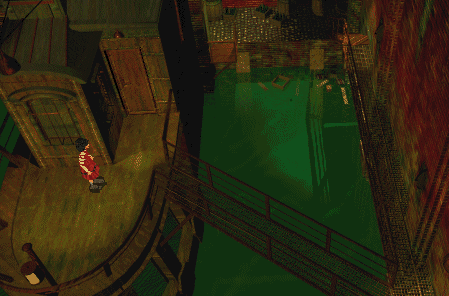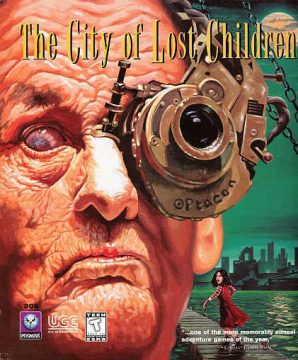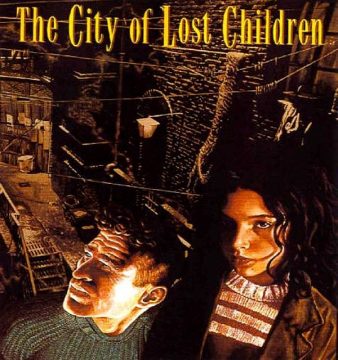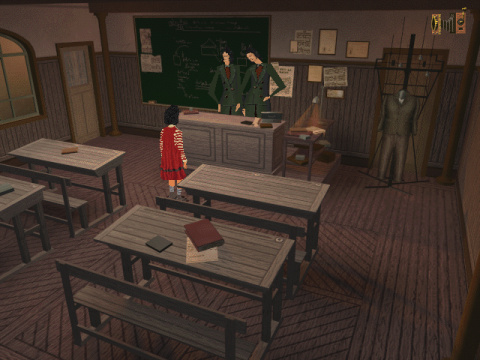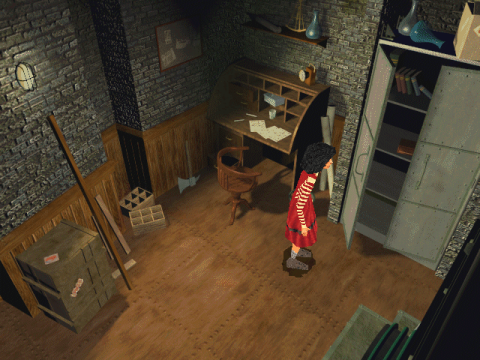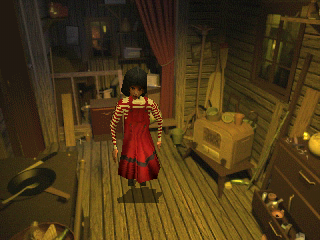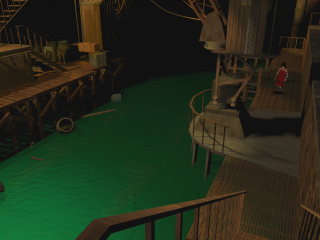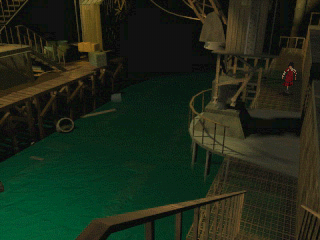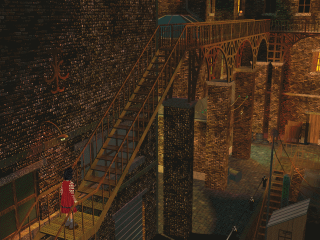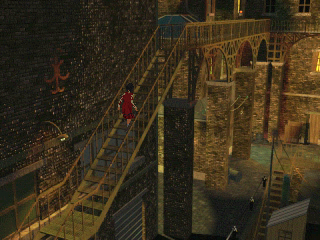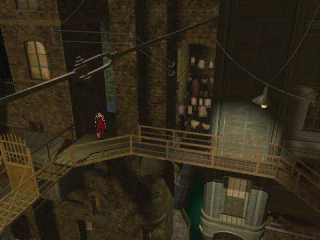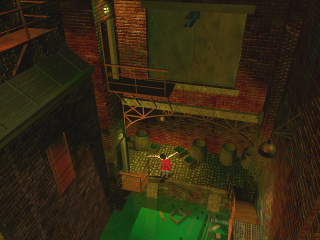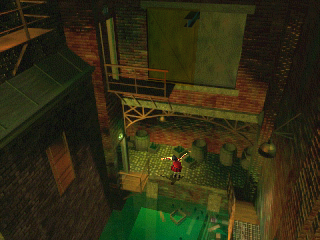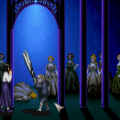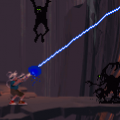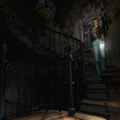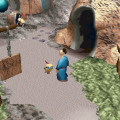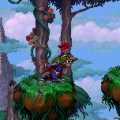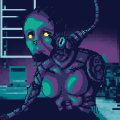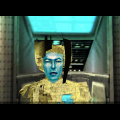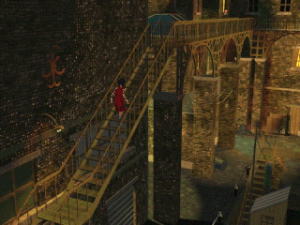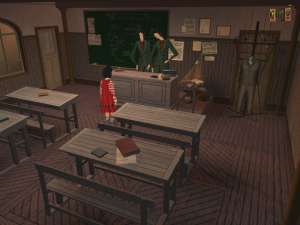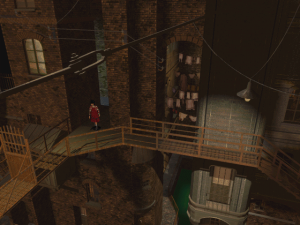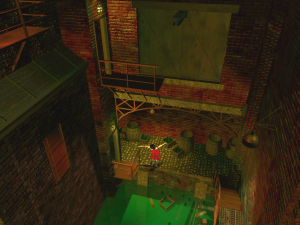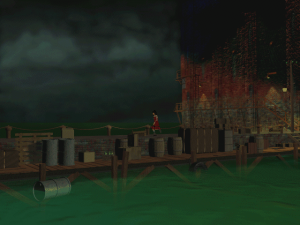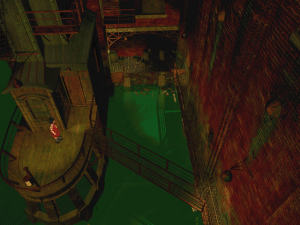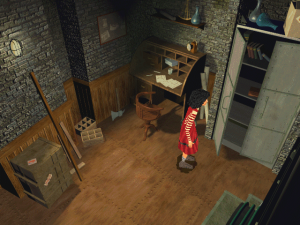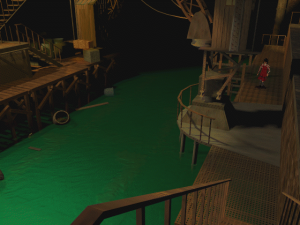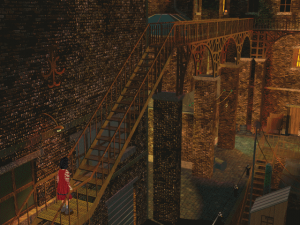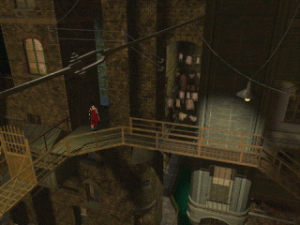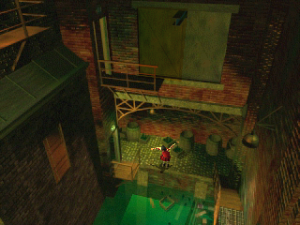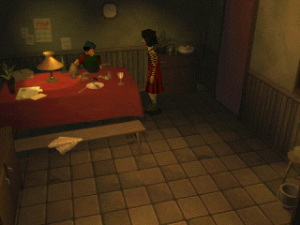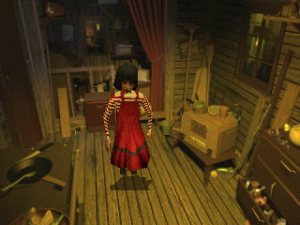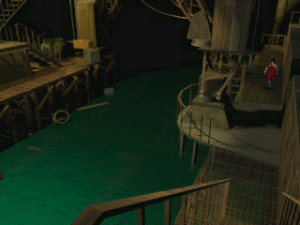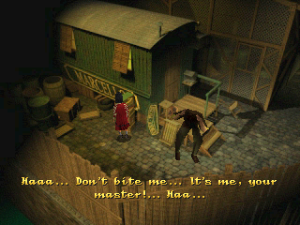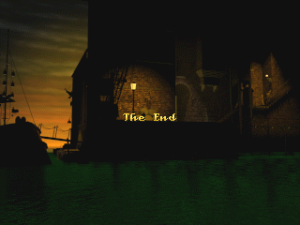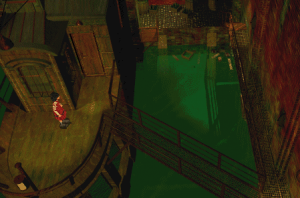Video game adaptations of movies have almost always been known to be terrible. Is The City of Lost Children game, developed by Psygnosis, an exception to that rule? Well, the short answer is “no”. The long answer is a bit more complicated.
The City of Lost Children is an adaptation of the 1995 movie of the same name by French director Jean-Pierre Jeunet. And if you’re not familiar with the film, you have no chance of understanding what’s going on in this game. The introductory cutscene doesn’t really explain anything, and it does not even introduce you to the character you will be playing for the entire game. Thankfully, the manual does give you a brief summary of the film/game’s plot, but even that is not much.
The setting is that of a nameless, steam punk-looking city by the seaside. An evil scientist has his henchmen, the cyclops, kidnap children in order to steal their dreams to prevent the process of his premature aging. The cutscene at the beginning of the game shows one of these children getting kidnapped, and that’s really all the information you’re going to get from the game itself. Next thing you know, you are in control of Miette (meaning “crumb” in French), a 12 year old girl in a red dress. You find yourself in a classroom and in front of Siamese sisters telling you to go steal money from a hut, without really explaining why or how.
From this you are apparently supposed to gather that you are an orphan, that these ladies are in charge of the orphanage and that they regularly have you commit robberies for them. From there on out, nothing you have to do will ever be explained nor straight-forward. Your only quests basically consist of running around, picking up objects, using them on other objects, and speak to a few characters. In keeping with the game’s style, these characters are almost never named and your only interactions with them consist of what can barely qualify as dialogue, seeing how little information is presented. They can also be particularly misleading, as the one with the fisherman. You have to talk to him in order to know what he wants; but when you do, he will just reply to you with two or three sentences that clearly mean that you are not making any progress with him and should obviously look somewhere else. These sentences are repeated each time you talk to him, but you are actually supposed to keep talking to him a few more times and he will just shift from generic rebuffs to a clear hint of what you must bring him, completely out of the blue. Some of the interactions, on top of being non-sensical (not in a good, funny way, too) are just plain weird. At one point you have to knock over a jar of trained fleas so that they can kill their trainer by biting him to death; all this so that you can take the watch from his still warm wrist. You cannot even talk to him about the watch first…
The puzzles that are not bland and uninspired (give food to the hungry man, a drink to the thirsty one…) are practically impossible to figure out. Early in the game you have to throw a metal bar at the lighthouse’s electric box in order to turn it off so the guard will come and fix it. This is the same guard that is preventing you from entering the hut you’re supposed to rob, but that is never made clear beforehand in any way. Some items have absolutely no purpose, but some of the necessary ones are actually invisible, because hidden behind a pillar or a box or in complete shadows. The only items you can easily spot are generally the useless ones. What’s more, even the items that you can pick up are indistinguishable from the scenery, so you may not realize that you can get them unless you are right in front of them and an indicator pops up.
Another frustrating element is how Miette moves. The controls are much like a Resident Evil-style survivor horror game, with polygonal characters over rendered backgrounds, which change to totally different camera angles as you move from screen to screen. The game world is very small, and she can run, but each time she bumps into an obstacle, even when simply walking, she will enter a three-second animation of her acting as if she has just slammed against something, during which you can only wait for the controls to be given back to you. The same goes for stairs, where she has to spend some time aligning herself perfectly with them so as to be able to enter the right animation. Still, the graphics are pretty, especially in the Windows version, benefiting from a higher resolution and generally less pixelated models. The PlayStation’s low resolution graphics actually bring another issue: the metal bar mentioned above is simply invisible in that version, although it is supposed to be in plain sight, for once. And you cannot really discover it by accident because it is placed on top of boxes you have to climb onto, which you would never do if it wasn’t for this bar. The scenery, as in the film, is actually pleasant to look at, if a bit repetitive. The accompanying music is also one thing that saves this game from being a complete wreck.
At the end of the game, you team up with one of the more fleshed-out characters – he must have at least five lines – and sail with him to the oil rig that serves as the villain’s base. And although this is the most important part of the story (saving the children), you just get to watch it as a cutscene, during which you meet another unexplained, unintroduced character – a steam-punk robot, no less – and free the kids.
Before you know it, the game is over and you will feel like you haven’t even taken part in the main story. You will only remember having been running errands for some people, who might or might not be interesting, but definitely not like you have enjoyed yourself.
